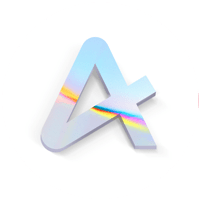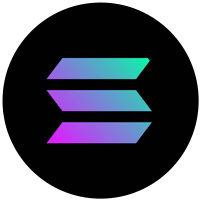menu
Why Yield Optimization and Cross-Chain Swaps Are Game-Changers — and Where Multi-Chain Support Fits In
So, I was messing around with some crypto wallets the other day, and wow, the space keeps evolving faster than I can keep up. Seriously? Just when you think DeFi’s yield farming is pretty straightforward, here comes multi-chain support shaking things up. My gut said, “This is gonna be big,” but I wasn’t quite sure why at first. Something felt off about all the complexity—like there were hidden layers I hadn’t quite grasped yet.
Here’s the thing. Yield optimization, cross-chain swaps, and multi-chain support aren’t just buzzwords. They’re deeply interconnected, and understanding how they mesh is pretty key if you want to get the most out of your crypto assets without losing your shirt. I’ll be honest, it can get overwhelming fast—especially if you’re just browsing for the right browser extension that actually integrates smoothly with the OKX ecosystem.
Initially, I thought yield optimization was mostly about chasing the highest APYs on a single chain. But then I realized that’s like fishing with one rod in a tiny pond when there’s a lake full of opportunities across multiple blockchains. It’s not just about hopping to the highest yield anymore; it’s about smartly navigating those waters with seamless cross-chain swaps and a wallet that supports it all. (Oh, and by the way, if you’re curious, the okx wallet extension has been a solid tool for this—more on that later.)
Cross-chain swaps are where things get spicy. At first glance, swapping tokens across different blockchains felt like a hassle. Like, “Wait—do I need multiple wallets? Different chains? What about fees?” But actually, recent innovations have made this smoother, though not perfect. On one hand, these swaps open the door to yield farming on chains you might’ve ignored. Though actually, the tech behind them still sometimes feels clunky and slow, which bugs me.
Whoa! Imagine moving your assets from Ethereum to Binance Smart Chain without jumping through hoops or worrying about losing track. That’s the dream, right? But every time I tried, I’d hit some weird delay or fee spike that made me hesitate. I’m biased, but having everything in one place, especially with multi-chain support baked into your wallet, changes the game entirely.
Now, multi-chain support isn’t just a fancy feature—it’s a necessity. The crypto world is fragmented; no single chain dominates like the internet browsers war back in the day. So if your wallet or tool lacks multi-chain capabilities, you’re basically stuck in a silo. That’s why I kept circling back to tools like the okx wallet extension. It’s lightweight, browser-friendly, and integrates with multiple chains, making cross-chain swaps and yield optimization way less of a headache.
Check this out—when I first tried optimizing yields, I was juggling multiple wallets and interfaces, which felt like spinning plates. But with an all-in-one solution, the process becomes more intuitive, and you can actually react to market changes quickly. That’s huge because DeFi yields can fluctuate wildly in minutes.
Something else that’s worth mentioning: security. The more chains and swaps you interact with, the bigger the attack surface, right? So having a trusted wallet extension that’s integrated directly with the OKX ecosystem acts like a kind of security anchor. It provides that extra layer of confidence, letting you experiment with cross-chain yield farming without biting your nails all the time.
Hmm… I remember when I first heard about multi-chain support, I thought it was just a marketing gimmick. Like, “Sure, claim you support multiple chains, but how well does that really work?” Actually, wait—let me rephrase that… Some wallets say they support multiple chains, but the experience is so fragmented it’s almost worse than managing separate wallets. That’s why the user experience matters as much as the tech behind it.
And here’s a little secret: not all yield optimization strategies are created equal across chains. Some chains have better liquidity pools, others have more stable staking options. So, if your wallet can’t help you navigate this intelligently—well, you’re probably leaving money on the table.
How the okx wallet extension Smooths the Ride
Okay, so check this out—the okx wallet extension isn’t just your standard crypto wallet. It’s designed with multi-chain support at its core, letting you hop between chains like Ethereum, BSC, and others without juggling multiple apps. This alone saves a ton of time and mental bandwidth.
What really stands out is how the extension integrates cross-chain swaps right into your browser environment. No more copying and pasting addresses or using sketchy third-party bridges that feel like a trap waiting to happen. The interface is clean but powerful, and the security features make me feel a lot less anxious about my assets.
Yield optimization with this extension becomes a breeze—you can track opportunities across chains, swap assets securely, and manage your portfolio all in one place. It’s like having a Swiss Army knife for DeFi right in your browser.
Whoa! Honestly, using the extension reminded me of when I first got a smartphone that actually synced all my apps and data effortlessly. It’s one of those “oh finally” moments in crypto tooling.
Still, I’m not 100% sure it’s perfect for everyone. Some users might find the multi-chain complexity a bit much at first, and learning how to maximize yield across different ecosystems takes patience. But with tools like the okx wallet extension, the learning curve is less steep than it used to be.
In the end, if you’re serious about yield farming and don’t want to get bogged down by chain juggling or risky swaps, embracing multi-chain wallets with solid cross-chain swap features is becoming non-negotiable. The crypto world isn’t just Ethereum anymore—it’s an interconnected web of blockchains, and your wallet should reflect that reality.

So, yeah… I’m still figuring out some of the nuances, but I can tell you this: having that kind of flexibility and control right in your browser changes how you approach DeFi strategies. If you haven’t checked out the okx wallet extension yet, it’s worth a look—especially if you want to dodge the typical headaches of multi-chain management.
Quick FAQs on Multi-Chain Yield Optimization and Swaps
Q: Why is multi-chain support important for yield optimization?
A: Because opportunities vary across blockchains. Without multi-chain support, you miss out on better yields and diversification. Plus, managing assets across different chains separately can be a nightmare.
Q: Are cross-chain swaps safe and efficient?
A: They’ve improved a lot but aren’t flawless. Using trusted wallets and extensions like the okx wallet extension reduces risks and makes swaps smoother.
Q: Can I optimize yield using just one wallet?
A: Yes, if that wallet supports multiple chains and integrates swap functions well. The okx wallet extension is an example that makes this practical.






















